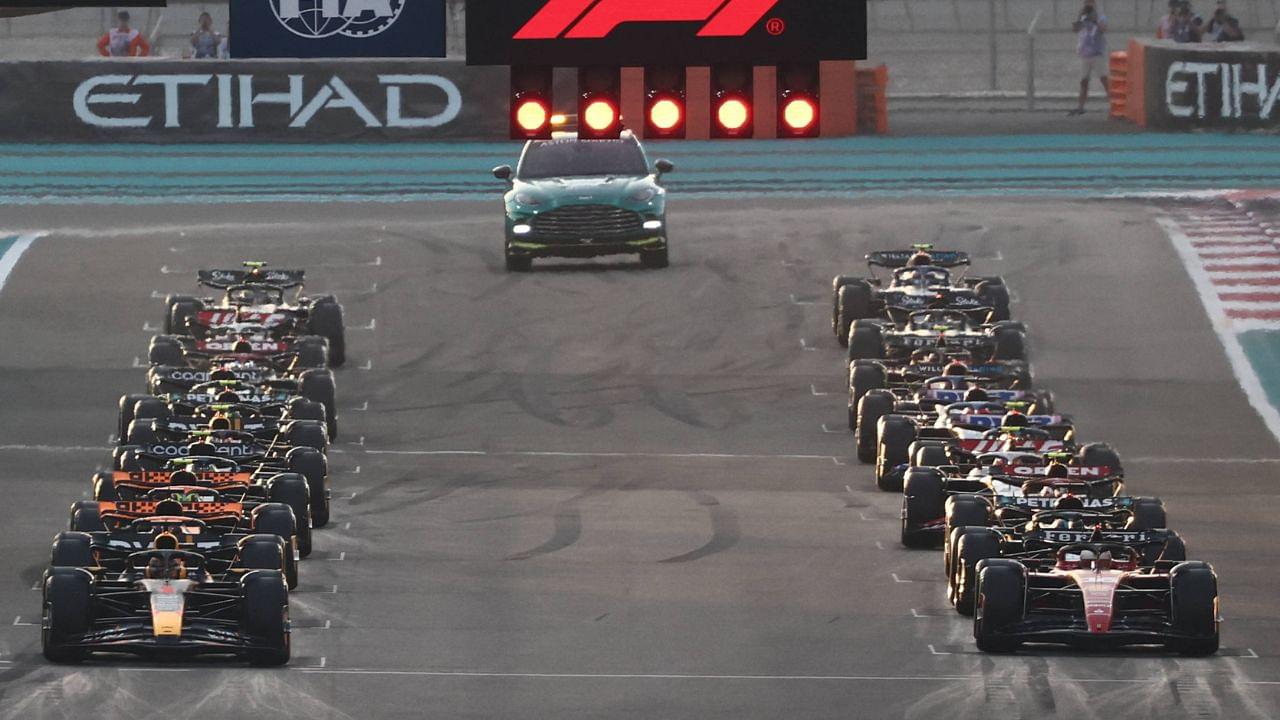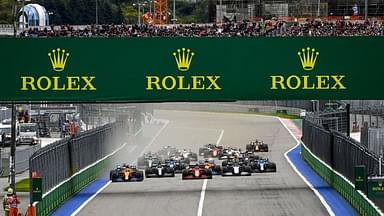Formula 1, the pinnacle of motorsports, has gone through a lot of changes since the first cars were built back in the early 20th century. Cars used to look radically different, and of course, were much slower than the ones we see Lewis Hamilton and Max Verstappen drive week in and week out today. It was different in every other aspect too, for example, the engine.
The first-ever F1 world championship took place back in 1950. The engines those cars used back in the day look almost unrecognizable today. They also sounded different and, of course, the output could not have been more different.
With new engine regulations set to take effect in 2026, let us take a look at the history of F1 engines from the days of its inception to present-day hybrid power units.
Birth of Formula 1: 1950
The idea of Formula 1 and races in the particular discipline (on a technical level) took place long before 1950. But that was the first year when a world championship took place. It was small, with a seven-race campaign taking place entirely in the continent of Europe, and the car was entirely different.
The engines used back in the day, of course, had no electrical components. Teams had two choices. Either use a 4.5 l atmospheric engine or a 1.5 l supercharged engine. Surprisingly, the strongest engine makers in this early era were Alfa Romeo, and their car was driven by the legendary Juan Manuel Fangio.
As is the trend today, the best drivers got the best cars (consequently the best engines).
First change in Formula 1 engine regulations: 1954-1966
By the 1954 season, F1 felt that it was time for a change. New regulations and a completely different engine were set to be introduced. These alterations gave birth to the rise of Ferrari, and the Maranello-based outfit started their ascend to becoming the legendary team we know it to be today.
1951. Juan Manuel Fangio wins the second F1 Championship aboard the Alfa Romeo Tipo 159. #AlfaRomeoisback https://t.co/t0wQv4E0bQ pic.twitter.com/uadhK694ub
— Alfa Romeo (@alfa_romeo) November 30, 2017
To decrease costs and work on durability, F1 decided to have 2.5 l atmospheric or 0.5 l supercharged engines replace its predecessor. This was huge for Ferrari who built one of the former, which generated 250 horsepower.
In 1956, Ferrari won their first drivers’ and constructors’ world championships. It was Juan Manuel Fangio behind the wheel of the car once again.
Ban of Supercharged engines: 1967-1985
Supercharged engines were unique because they relied on the use of air to increase performance. But in 1967, F1 decided that they had enough of it as they got banned. Capacity for the atmospheric engines increased to 3 l and almost every team had to build their components from scratch.
This era lasted for a long time, and we saw some revolutionary changes in F1 in this era. One of the things that stand out as iconic was the birth of Cosworth engines. The Cosworth DFV (Double Four Valve) was a 3.8 l V8 engine that made its debut in 1968.
Between 1968 and 1983, this engine guided F1 teams to over 150 Grand Prix victories, but only one team did not use it – Ferrari. They still relied on the V12.
Introduction of turbo engines: 1977
In the midst of the rise of V8 engines, turbo-engines came into action. Like supercharged engines, turbocharged units would ‘force more air’ into the engine to maximize its power and output. It was a monumental moment, as it helped the car’s handling tremendously.
Renault took up this concept before anyone else and developed a fairly powerful 1.5-litre V6 turbo engine in 1977. Unfortunately, it was as unreliable as it was fast. Still, they stuck to the idea, changed quite a few things, and by 1983, became a force on the grid with legendary Frenchman Alain Prost at the helm.
From mythical sports cars ️ to iconic production models , learn more about the pioneer & key role of #Renault in the introduction and the development of turbo engines in #F1 ➡️ https://t.co/qsMO6rr9aL pic.twitter.com/YOQJUkk5JM
— Renault Group (@renaultgroup) July 15, 2019
By the 1980s, turbocharged engines could produce over 1000 horsepower during qualifying, and 800 during races. Alas, in 1988, F1 decided to ban turbocharged engines too.
Birth of the V10 era: 1989-2005
Arguably one of the most exciting times in F1 was this era. It saw the likes of Ayrton Senna, Mika Hakkinen and Michael Schumacher rise to legendary status in F1. A new version of the 3.5-litre atmospheric units gave birth to the rise of the V10 era.
Engines became more fuel efficient, reliable and they lasted much longer. A big player rose during this time and it was Japanese manufacturer Honda. Entering a partnership with McLaren, Honda dominated F1 for some time in the 80s, with Senna and Alain Prost.
View this post on Instagram
Renault followed suit, helping Williams and Benetton win championships in the late 90s. The V10 era was also a favorite for fans, because of the high-pitched noise the cars made. Even today, many go on a nostalgic trip, just thinking about this particular era.
Decrease in output and increase in stringent regulations: 2006-2013
The FIA took a lot of things into consideration ahead of the 2006 season. Power units output kept decreasing as this era began, with 800 horsepower generated in 2006 and 750 in 2013. Teams used a 2.4 l V8 engine, which was a lot more restricted in terms of fuel flow and development.
Mercedes, Renault, and Ferrari all made big strides in this era. It started with Fernando Alonso‘s 2006 title win with Renault, and a few years later, saw the rise of Sebastian Vettel. Between 2010 and 2013, Vettel won four consecutive world titles with Red Bull, using Renault engines.
#OnThisDay in 2005, Fernando Alonso held off world champion Michael Schumacher to win the San Marino GP by two-tenths of a second
It was the Spaniard’s third successive victory after P3 in the season-opener, and the Renault driver went on to claim his first world title pic.twitter.com/3cvfEOHQpd
— Channel 4 F1® (@C4F1) April 24, 2018
Following the 2013 campaign, however, F1 entered into a whole new era of engines.
Turbo-hybrid era: 2014-present
F1 is currently in the midst of the turbo-hybrid era, introduced in 2014. All teams are required to use 1.6 l V6 engines that from the fans’ perspective do not sound as exciting as the V10 or V8. In terms of efficiency and lower emissions, however, they are the best power units F1 has ever produced.
LEWIS HAMILTON IS A SEVEN TIME WORLD CHAMPION!#TurkishGP #F1 pic.twitter.com/gOGfeEZxp8
— Formula 1 (@F1) November 15, 2020
The power unit also increased from 750 horsepower in 2014 to 1000 horsepower in 2022. The ERS (Energy Recovery System) is revolutionary, allowing cars to use up stored energy for a sudden burst of pace.
Mercedes, with Lewis Hamilton at the helm, dominated most of this era. He won six world titles between 2014 and 2020, with the baton of dominance passing on to Max Verstappen and Red Bull (with Honda engines) the next year.
New Formula 1 regulations: 2026 -?
One of the things F1 wants to focus on is sustainability. Hence the new regulations that will take effect from 2026 onwards will be 100% carbon-free. Engines will also have increased electrical power and reduced fuel allowance.
Another notable change will be the removal of the MGU-H (Motor Generator Unit – Heat) that helps drivers recover lost energy. Teams will have to build their engines from scratch, and there is a new player – Audi – who has already confirmed their entry into F1.






